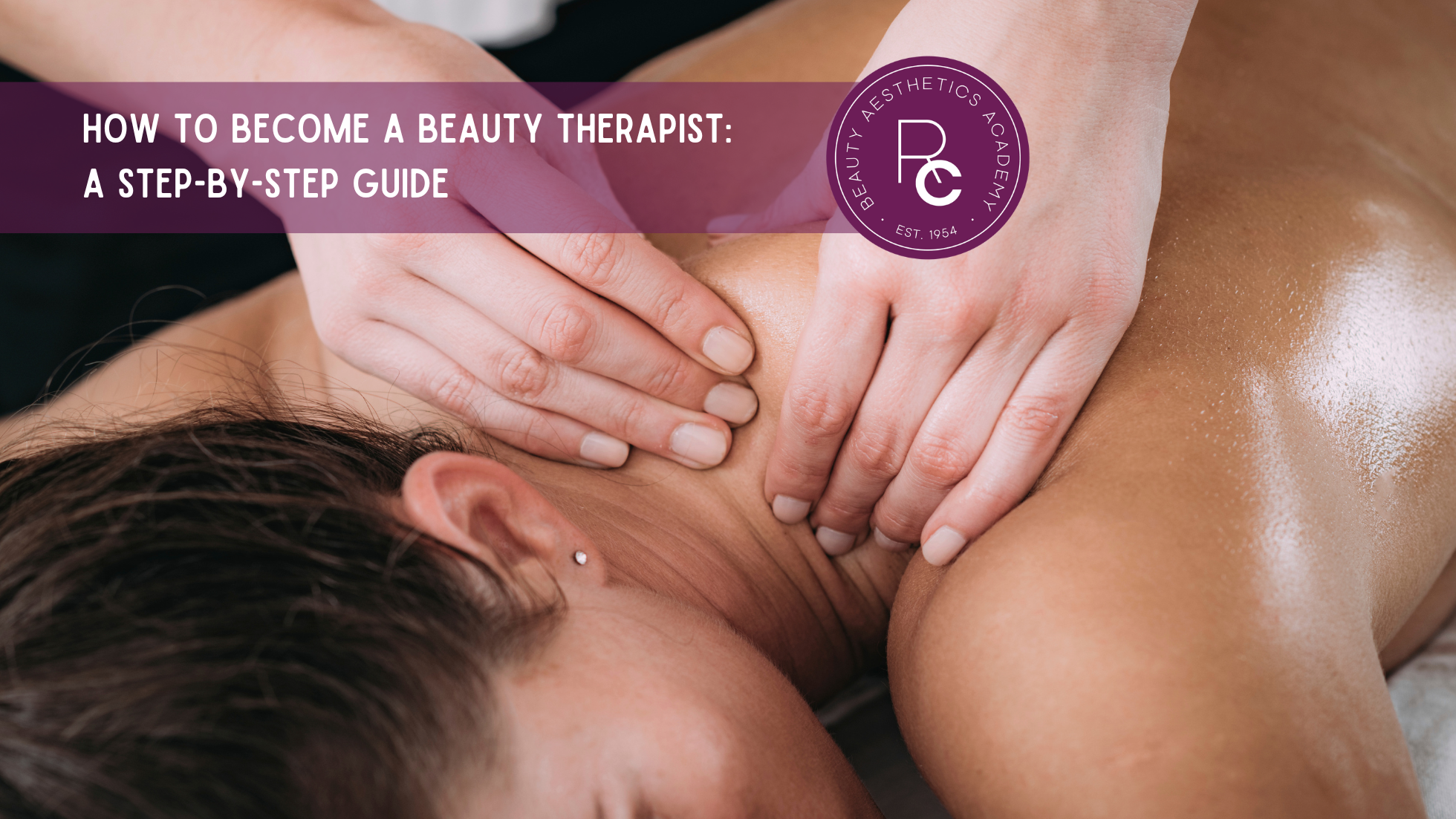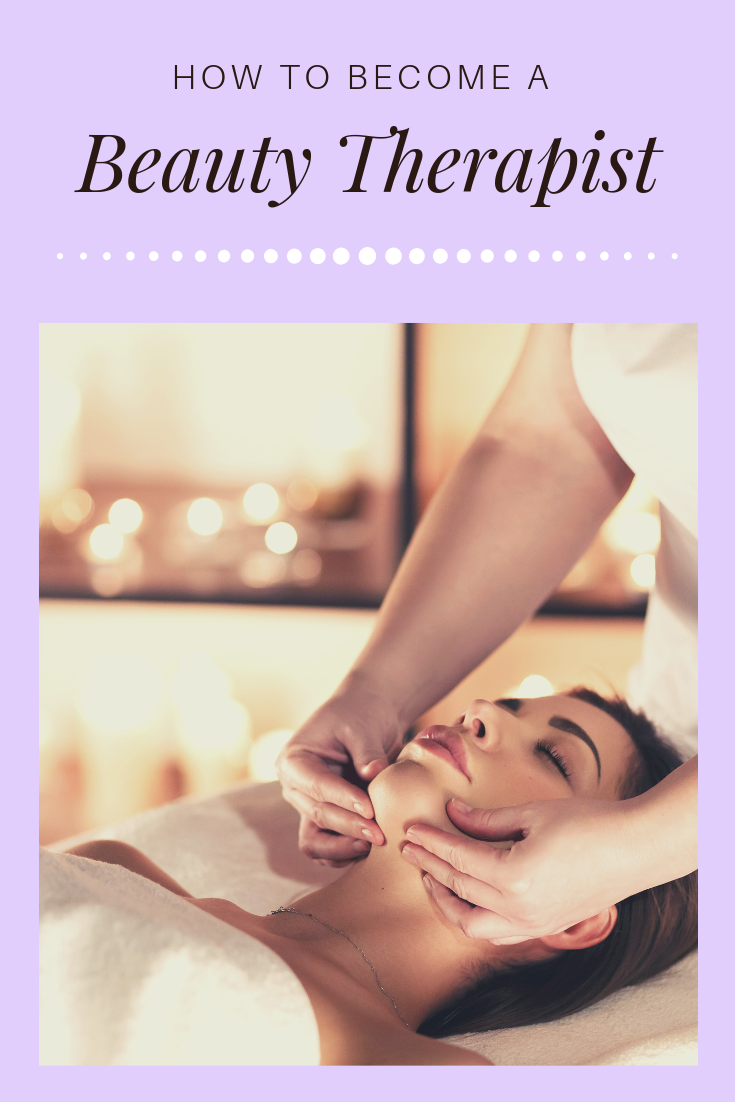
Do you have a strong interest in beauty and want to find a career that reflects that passion? Beauty Therapists play a crucial role in boosting their clients’ confidence and well-being, making them feel beautiful and confident.
Beauty therapy is a rewarding and dynamic profession that offers professional treatments that help clients look and feel their best. These treatments are typically found in salons or spas, such as facials, waxing, nails, and massages. There is a growing market for clients who want these services regularly and are willing to invest in their physical appearance and well-being.
In this blog, we will guide you through our five steps to becoming a successful beauty therapist. From understanding the role’s responsibilities to choosing the right academy and exploring the diverse career paths available, we’ve got you covered!
Becoming a beauty therapist can open the door to numerous exciting, lucrative opportunities. So, if you’re passionate about beauty and eager to start a fulfilling career, read on to discover how you can become a beauty therapist.

Step 1: Understand What a Beauty Therapist Does
Before discussing the training and qualifications required, it’s essential to grasp what being a beauty therapist entails.
What is a Beauty Therapist?
A beauty therapist is a skilled professional who provides a range of beauty treatments and services to enhance the appearance and well-being of their clients. Your primary objective is advising clients about the most appropriate therapies based on their needs and concerns.
These beauty services can include:
- Facial Treatments: Cleansing, exfoliating, skin analysis, and moisturising the skin, as well as specialised treatments like microdermabrasion and extractions.
- Body Treatments: Massages, body wraps, and other treatments to improve skin texture and relaxation.
- Nail Care: Manicures, pedicures, and nail art.
- Hair Removal: Beauty therapists can perform waxing and threading.
Skills Required to be a Beauty Therapist
Clients expect their Beauty Therapist to have:
Attention to Detail: Ensuring every treatment is performed precisely and carefully.
Good Communication Skills: Understanding clients’ needs and preferences and providing advice and recommendations.
Excellent Customer Service: Provide unsurpassed service, ensuring clients leave feeling they had the best experience possible.
Time Management: Learn how long treatments will take and plan how to balance numerous clients throughout the day, planning the schedule to ensure each client is finished before the next.
Professionalism: Maintaining a high standard of hygiene and customer service.
Passion for Beauty and Wellness: A genuine interest in helping people look and feel their best.
To be successful in this role, a beauty therapist needs a combination of beauty knowledge, technical skills and personal qualities. Understanding these responsibilities and skills is the first step towards a successful career in beauty therapy.
Step 2: What qualifications are required to become a Beauty Therapist
Completing accredited training courses to become a qualified beauty therapist is crucial as it ensures that the education you receive meets industry standards. It also makes you more attractive to potential employers, as they can trust that you have received high-quality training and possess the necessary skills to perform effectively.
To become a qualified beauty therapist, you will need to complete an accredited Level 2 and Level 3 Beauty Therapy diploma. These courses provide the necessary knowledge and hands-on technical experience to perform a wide range of beauty treatments.
VTCT Level 2 Beauty Therapy
The VTCT Level 2 Beauty Therapy course is the foundation of your training. The VTCT/NVQ Level 2 Beauty Therapy Certificate can be completed in as little as 12 weeks, studying just two days a week or over 22 weeks if you prefer to study one day a week.
It covers basic beauty treatments and essential units, including:
- Facials, Massage, and Skincare—You will learn how to perform massages and how to complete skin analysis. The skincare element will also cover various techniques, such as cleansing, moisturising, steaming, and spot extraction.
- Lash Lift—Also referred to as eyelash perming, you will learn the practical method for providing this treatment safely.
- Eyelash and Eyebrow Tinting/ Shaping — Learn how to analyse facial shapes and skin tones for the best brow results for your client’s face.
- Waxing—You are taught to apply hot and strip wax to the face, bikini, and other body areas.
- Nail Treatments — Learning to provide the two most popular nail treatments: manicures and pedicures.
- Health, Safety, and Hygiene—Adhering to health, safety, and hygiene regulations will enable you to provide safe treatments and maintain your work environment to high standards.
- Client Care, Communication, Salon Reception Duties — An underestimated unit but critical to your success. You will learn how to communicate effectively and provide a high standard of service.
- Consultation Techniques and Retail Skills—You will be taught to understand your client’s needs when providing consultations and retail services to ensure you have all the skills you need to succeed.
As mentioned, this course will only provide the foundational skills required to start working in the beauty industry. Immediately after completing the Level 2 Beauty qualification, you can work as a junior therapist, but to work unsupervised as a Beauty Therapist, you must complete a Level 3 Beauty Therapy Diploma.
Watch our Academy director Eleonora Androva’s breakdown of our Level 3 Beauty Therapy course ▼
VTCT Level 3 Beauty Therapy Diploma
The VTCT Level 3 Beauty Therapy course builds on the skills acquired at Level 2 and introduces advanced treatments and techniques.
With a flexible study schedule, the VTCT/NVQ Level 3 Beauty Therapy Certificate can be completed in as little as 14 weeks.
It covers advanced beauty treatments and important units, including:
- Body Electrical Treatments — You will learn how to perform advanced body treatments using electrical equipment to enhance skin and body conditions.
- Facial Electrical Treatments — This includes using various electrical devices to improve facial skin tone, texture, and appearance.
- Microdermabrasion—You will be trained in this popular exfoliation technique, which removes dead skin cells, reduces fine lines, and improves overall skin texture.
- Indian Head Massage — Learn the techniques of this traditional massage to relieve stress, improve circulation, and enhance scalp health.
- Body Massage — This unit deepens your massage skills, focusing on techniques to relieve muscle tension and promote relaxation.
- Electrolysis — You will learn the method of permanent hair removal using electrical currents.
- Health and Safety — Advanced understanding of health, safety, and hygiene regulations to ensure high standards in your work environment.
- Anatomy and Physiology — A detailed study of the human body to support your understanding of how beauty treatments affect the body.
This course will give you the advanced skills and knowledge needed to excel in the beauty therapy industry, providing a wide range of high-demand services.
How long does it take to become a beauty therapist?
Going from a beginner without prior experience to a trained beauty therapist would take learners 6 to 12 months. The duration will depend on if they choose a part-time or full-time course.
Step 3: Choose the Right Beauty Therapy Training Academy

Selecting the right training academy is critical in your journey to becoming a beauty therapist. A reputable academy will provide the best education, hands-on experience, and support throughout your training.
Ray Cochrane Academy is renowned for its comprehensive, accredited beauty therapy courses and experienced instructors. Students who study with us will learn from highly qualified beauty professionals who are passionate about passing on their knowledge.
Learners will have access to modern facilities, the latest beauty equipment, and high-quality beauty products, ensuring their practical training is completed in a professional environment.
We have been established for over 70 years, offering full-time, part-time, and fast-track courses to suit our students’ learning paces and schedules. Choosing Ray Cochrane Academy ensures you receive the highest standard of beauty training to set you up for success in the beauty industry.
Step 4: Explore the Career Paths available to Beauty Therapists
The beauty industry is fast-paced and growing, with new products, techniques, and technology developing yearly. Once you have completed your training, exciting career opportunities await you!
Salon and Spa
Working in a beauty salon or spa is one of the most common career paths for beauty therapists. In this setting, you can offer a wide range of treatments, from facials and massages to manicures and pedicures. Salons and spas provide a vibrant and dynamic environment where you can build a loyal clientele and develop your skills.
Massage Therapist
Becoming a massage therapist could be a fulfilling career choice if you have a passion for holistic therapies and wellness. Massage therapists specialise in diverse techniques, such as Swedish massage, deep tissue massage, and aromatherapy, to promote relaxation and alleviate stress and muscle tension.
Facial Therapist
Facial therapists focus on skincare treatments, helping clients achieve healthy, radiant skin. This role involves performing facials, recommending skincare routines, and treating specific skin conditions. With the growing interest in skincare, facial therapists are in high demand.
Beauty Brand Representative
Another exciting career path is working as a brand representative for beauty products. In this role, you can combine your knowledge of beauty therapy with marketing and sales skills. Brand representatives promote products, conduct demonstrations, and provide training to other beauty professionals.
The Travel and Spa Industry
As a qualified beauty therapist, you can work anywhere in the world. Cruise Ships and holiday resorts are known for their spas and beauty services, with many boasting full spas on board. Working in the travel industry is a popular choice for many beauty therapists as you can travel the world while developing your skills and advancing your career.
Step 5: Start Working and Gain Experience and Loyal Clients
After completing your training and obtaining your qualifications, the next step is to work in your chosen field and gain valuable experience.
Look for jobs in beauty salons, spas, wellness centres, or hotels. These working environments will provide you with practical experience and help you refine your skills working with paying clients.
Building a loyal clientele is essential for long-term success as a beauty therapist. Provide your clients with excellent customer service, listen to their needs and consistently exceed their expectations! You should always maintain a high level of professionalism in all your interactions. This includes adhering to hygiene standards, respecting client confidentiality, and managing time effectively.
Professionalism will enhance your reputation and build trust with your clients.
Ready to start your journey to becoming a beauty therapist?
Becoming a beauty therapist is a fulfilling journey that combines technical skills, creativity, and a passion for helping others.
There’s no better place to begin than at Ray Cochrane Beauty Aesthetic Academy. Our comprehensive courses, experienced tutors, and state-of-the-art facilities will give you the skills and knowledge you need to succeed.
Take the first step towards your dream career today! Contact us at Ray Cochrane Beauty Aesthetic Academy to learn more about our beauty therapy courses.
Please email us at admission@raycochrane.co.uk or call us at 02074866291
